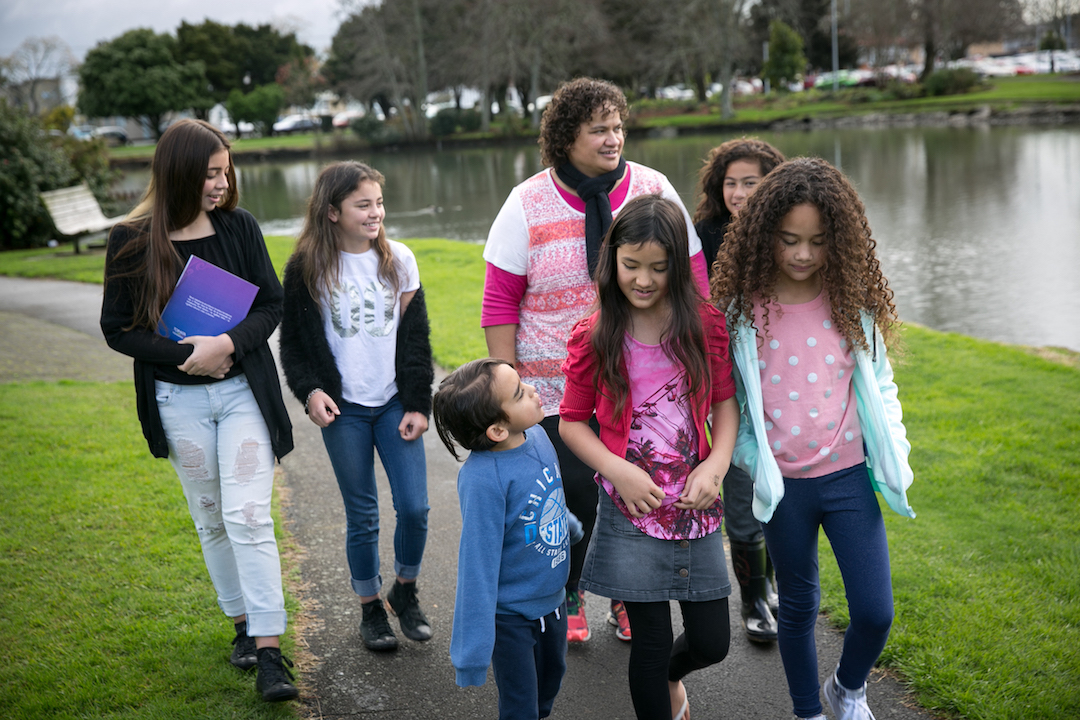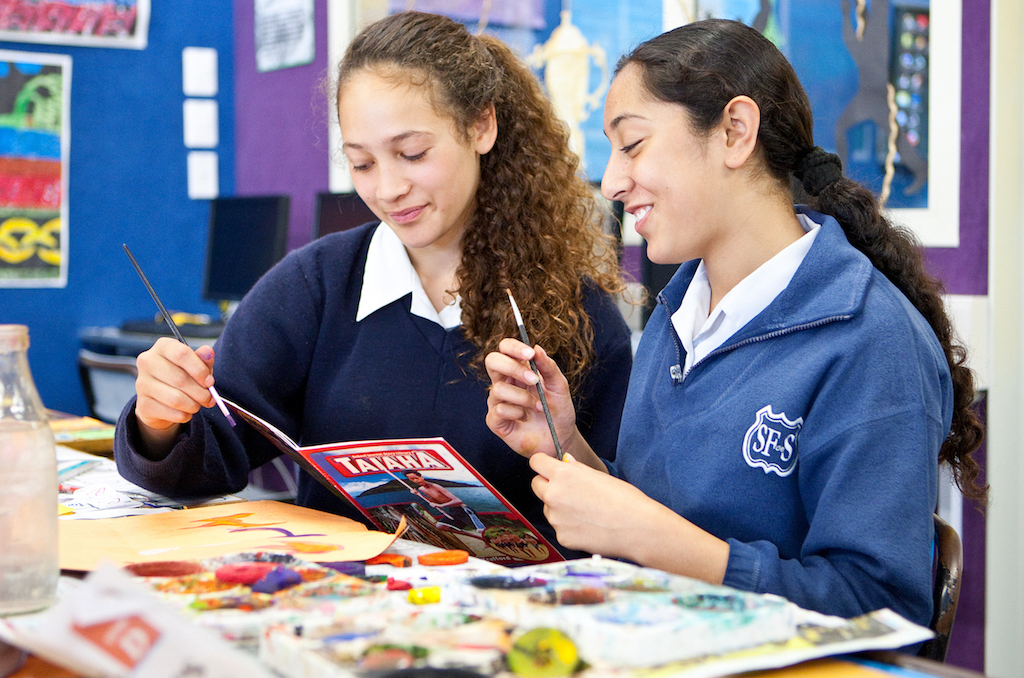
In 2001, the New Zealand Working Party on Gifted Education was established to provide advice on a policy and funding framework for gifted education. The following year, the Ministry of Education released the working party’s recommendations in the document Initiatives for Gifted and Talented Learners (Ministry of Education, 2002a). A major outcome of this report was the amendment of NAG 1 (c) iii to include gifted and talented learners.
The initiatives included a vision and set of core principles for supporting the achievement and well-being of gifted learners, and these were revised in 2011 by the Gifted and Talented Policy Advisory Group. The revised vision and principles as published in Gifted and Talented Students - Meeting Their Needs in New Zealand Schools include formal recognition of the Treaty of Waitangi and its implications for ensuring that provisions for gifted education reflect the bicultural foundations of Aotearoa New Zealand.
"Gifted and talented learners are recognised, valued, and empowered to develop their exceptional abilities and qualities through equitable access to differentiated and culturally responsive provisions."
Gifted and Talented Students - Meeting Their Needs in New Zealand Schools (referenced throughout this site as MOE 2012)
PDF, 6.41 MBNurturing gifted and talented children – A parent-teacher partnership
PDF, 6.76 MBSchools' Provision for Gifted and Talented Students. Education Review Office (June 2008a).
PDF, 505.25 KBSchools' Provision for Gifted and Talented Students : Good Practice. Education Review Office (June 2008b).
PDF, 411.01 KBOffice of the Minister of Education, Initiatives for Gifted and Talented Learners (Wellington, Office of the Minister of Education, 2002)
These core principles support the achievement and well-being of gifted learners:
These principles require kura/schools/ECE settings to ensure that all of their provisions are responsive, engaging, inclusive and developed in consultation with their community. They must provide for their gifted learners in ways that reflect and connect with the Treaty of Waitangi and the following important policy documents and initiatives:
Why?
A defensible rationale statement for gifted education informs the impetus for change and subsequent provisions. This rationale should align with the overall philosophy of the kura/school or ECE setting.
Who?
Gifted education involves all teachers in a kura/school/ECE setting/Kāhui Ako. Who will have responsibility for gifted education (GaTE) in the kura/school/ECE setting/Kāhui Ako to ensure:
What?
A strengths and needs analysis will provide baseline data. A kura/school/ECE setting/Kāhui Ako must then arrive at a definition of gifted to provide the basis for identification and responding to needs and interests. This definition will be developed with all stakeholders including parents and whānau, teachers, learners as well as local ethnic groups, hapū and iwi.
Where?
The appropriateness of where gifted learners are best provided for - for example, a separate class, a withdrawal programme, working at their own level within the classroom, at home, ability and cluster grouping, in online environments, in the community or in other educational contexts - can be addressed once a kura/school/ECE setting/Kāhui Ako has answered the why, who and what questions.
How and when?
Ongoing kura/school/ECE setting/Kāhui Ako-wide review of all aspects of gifted education provision is vital. This should involve all stakeholders including teachers, senior leaders and support staff, parents and whānau, learners, and members of the wider community.
Gifted and Talented Education in New Zealand Schools. Riley, T; Bevan-Brown,J; Bicknell, B; Carroll-Lind, J; Kearney, A (2004).
PDF, 2.88 MBThe Extent, Nature and Effectiveness of Planned Approaches in New Zealand Schools for Providing for Gifted and Talented Students. Riley, T; Bevan-Brown,J; Bicknell, B; Carroll-Lind, J; Kearney, A (2004)
PDF, 7.55 MBWhat the world does for the gifted and talented. Freeman, J (2011).
PDF, 175.98 KBWhy should we care? An introduction to gifted and talented learners in our classroom Hofkens, E.
PDF, 808.49 KBGlobal Principles for Professional Learning in Gifted Education
PDF, 3.12 MBSome important definitions and research have influenced attitudes to giftedness over the last five decades. Following is a summary of several these influential studies:
Lewis Terman of Stanford University initiated a longitudinal study in 1921 with a group of more than 1,500 children with IQ’s of more than 140 and an average age of 11 years. His findings were published in a five volume series Genetic studies of Genius (1926 through to 1959). They were particularly significant in that they defied the prevailing mythical ‘maladjusted freak’ stereotype of the time in presenting the gifted as physically, psychologically, emotionally and socially superior.
Robert J. Sternberg, (1985) a prominent figure in research of human intelligence formulated the triarchic theory of intelligence with three sub theories – componential (analytical), experiential (creative), and practical (contextual). The theory was among the first to go against the psychometric approach to intelligence and take a more cognitive approach. He viewed intelligence as how well an individual deals with environmental changes throughout their lifespan and described human intelligence as "mental activity directed toward purposive adaptation to, selection and shaping of, real-world environments relevant to one's life".
The Marland Report (1972). This report was presented to the United States Office of Education and had a significant impact on gifted education and remains relevant today. The report presented the USA federal government’s formal definition of giftedness, the first truly multi-categorical definition, and outlined the unique learning needs of gifted students and the challenges faced by these students.
Professor George William Parkyn (1910-1993), was a New Zealand scholar and educational researcher with an interest in intellectual giftedness, and a patron of the New Zealand Association for Gifted Children. The George Parkyn National centre for Gifted Education founded and directed by Rosemary Cathcart in 1995 (sometimes called the George Parkyn One Day School) has subsequently merged with ‘The Gifted Kids’ Programme’ (established in 2000) in 2014 to become the New Zealand Centre for Gifted Education (NZCGE).
In 1948 Parkyn wrote ‘Children of high intelligence, a New Zealand study’, New Zealand’s first volume on gifted children and their educational needs. He was a keynote speaker at the first World Council for Gifted and Talented Children conference, held in London in 1975. The child centred nature of New Zealand Education is reflected in his comment below:

It is important to recognise that each child is a unique individual, a person in his own right, with his own life to live, with his own wants and needs, his own abilities and interests, his own successes to achieve, his own failures to react to. Together with a recognition of the uniqueness of each individual, it is important that teachers accept the child for his own sake. This acceptance implies a willingness to help each child develop into his own best person. From a secure base the child ventures out and returns, constantly enlarging his world, and growing up with hope and optimism about the outcome of his encounters with the world.
Renzulli (1978) Renzulli developed a definition of giftedness based on the interaction between three basic clusters of human traits:
A concern that these traits under-identified gifted learners was addressed by his later model, the School wide Enrichment Model. This model was more acceptable because it was inclusive, affecting many learners in a kura/school/ECE setting/Kāhui Ako, while being highly effective with gifted learners .
Renzulli, Sand and Reis (1986) created The Enrichment Triad Model specifically for the education of gifted learners so that teachers could provide programs that are qualitatively different.
Howard Gardner (1983) proposed his revolutionary theory of multiple intelligences in Frames of Mind: The Theory of Multiple Intelligences. Gardner asserted there were multiple types of human intelligence, each representing different ways of processing information: musical-rhythmic, visual-spatial, verbal-linguistic, logical-mathematical, bodily-kinesthetic, interpersonal, intrapersonal, and naturalistic. He later suggested that existential and moral intelligence may also be worthy of inclusion. Although the distinction between intelligences has been set out in great detail, Gardner opposes the idea of labeling learners to a specific intelligence. He maintains that his theory of multiple intelligences should "empower” learners, not restrict them to one modality of learning. According to Gardner, an intelligence is "a biopsychological potential to process information that can be activated in a cultural setting to solve problems or create products that are of value in a culture."

Stephanie Tolan is an author of young adult and children's fiction, as well as an author and speaker on her topic of passion: exceptionally gifted children and asynchronicity. Is It a Cheetah? has become a metaphor for gifted children everywhere. She has researched extensively the challenges gifted "asynchronous" children and adults face as they find a way to fit into their world.
Dabrowski and Piechowski Piechowski (1979) saw an opportunity to apply Dabrowski’s concept of overexcitability (derived from Dabrowski’s Theory of Positive Disintegration, a theory of personality development, 1977) in the gifted field, and he has actively disseminated his interpretation and emphasis of Dabrowski’s work within this community. Piechowski largely described and emphasized Dabrowski's idea of overexcitability and Piechowski’s interpretation, commonly referred to as ‘the overexcitabilities’ and more recently ‘intensities’, continues to evolve and diverge today.
Linda Kreger Silverman (1981) originated the concept of the ‘visual-spatial’ learner/learners (VSL) and has created methods of identifying and teaching this population. She founded and directs the Institute for the Study of advanced Development, and its subsidiaries, Gifted Development Centre (GDC) and the Visual-Spatial Resource Centre in Denver, Colorado. In the last 35 years, she has studied over 6,000 children who have been assessed at GDC, the largest data bank on this population.
Françoys Gagné (1995, 2008) noted that there was continuing confusion between the terms ‘gifted’ and ‘talented’ and developed a model to differentiate between the two. He defined giftedness as a high aptitude or potential in any domain of naturally occurring ability, while the outward expression of that ability (outstanding achievement/performance) he labelled talent. His DMGT (Differentiated Model of Giftedness and Talent) details the personal and environmental factors that may support, or hinder, the development of an individual’s gifts into specific talents. His work underpins gifted and talented education in many parts of the world and has been translated into many languages. English readings can be accessed from his website at: DMGT-Related Documents in English.
Developing written guidelines that record the principles, provision, plans, and procedures for meeting the needs of their gifted learners helps kura/schools/centres/Kāhui Ako to establish comprehensive and enduring approaches to GaTE. While written guidelines do not guarantee appropriate approaches in every classroom, they do ensure that these learners’ needs remain on the kura/school/ECE setting agenda. They also provide criteria against which subsequent approaches can be reviewed and evaluated.
As kura/schools/ECE settings/Kāhui Ako create their guidelines and review their approaches to providing for the gifted, they can involve members of their whole community. A commitment to catering for the strengths, needs and interests of gifted learners ensures that the impetus for new initiatives and the responsibility for implementation reside with the whole kura/school/Kāhui Ako. Such a shared vision means that provision for this group of learners is more likely to be ongoing and evidence-based, as well as being regularly reviewed and improved.
"What happens in the classroom obviously affects equity, but the relationships between schools, parents and communities also matter."

Kura/schools/ECE settings/Kāhui Ako should develop guidelines in consultation with the members of their wider community. The parents, whānau and iwi of gifted learners need to be involved in meaningful ways rather than being simply informed about what is happening. This means regular consultation with parents and whānau part of the kura/school/ECE setting’s ongoing focus on building a partnership with the community.
Gifted learners can make valuable contributions to the development and review of their education. Kura/school/ECE setting/Kāhui Ako may also require an outside “expert” to guide them in developing their guidelines.
While there is no single recipe for developing guidelines, the following are important aspects of both initial development and later review:
A collaborative inquiry approach to developing and implementing kura/school/ECE setting/Kāhui Ako plans and procedures and provision ensures a process of self-review that is cohesive and ongoing. Such an approach builds participants’ knowledge of how to support gifted learners effectively.
Professional learning and development is essential to developing, implementing, and maintaining effective provisions for gifted learners (Riley and Moltzen, 2010). Professional learning and development is necessary to build teacher capability and to build and sustain coherent kura/school/ECE settings/Kāhui Ako-wide provision.
Educators in New Zealand need understanding of each of the following areas:
For professional learning and development programmes to be effective, they need to:
Professional development in kura/schools/ECE settings/Kāhui Ako needs to be contextually based and to reflect their current policies and practices. This is the most effective approach for achieving real change.
Concepts of giftedness reflect culture, time and place: they are a social construct, based on human qualities and attributes most valued in a particular community at a particular time. Whilst New Zealand communities are diverse, they are embedded in our bicultural heritage. Definitions of ‘gifted and talented’ will reflect this diversity and heritage.
One of the first tasks for a kura/school/ECE setting is to conceptualise what their community recognises as giftedness. In doing this, they may find that there is a range of views on giftedness in their community and in the achievements, ideas, behaviours and qualities they refer to. Some communities will have individual and/or collective concepts. A definition developed with all stakeholders can continue to be reviewed and refined in response to evidence from formal research and the kura/school/ECE setting’s own collaborative inquiry.
A kura/school/ECE setting arrives at a definition of giftedness which gives the the basis for identification of gifted learners’ strengths, needs and provision requirements.
While many theories and definitions of giftedness have been developed, there is no universally accepted theory or definition. However, New Zealand policy makers and researchers have developed useful sets of criteria that can be used as a framework for developing definitions that reflect the local communities. The criteria listed below are based on research from the New Zealand Working Party on Gifted Education (2001), Riley et al. (2004), ERO’s (2008a) national report, and the expertise of the Ministry of Education Gifted and Talented Advisory Group.
A kura/school/ECE setting-based definition of giftedness needs to:

The description “gifted” applies to a wide range of learners with many different abilities and qualities. Some learners may have exceptional abilities in science or technology, some in art or poetry, and others in social leadership. The range of special abilities within conceptions of giftedness includes general intellectual abilities, specific academic aptitude, cultural abilities and qualities, creative abilities, social and leadership abilities, physical abilities, emotional and spiritual qualities,and abilities in the visual and performing arts. The breadth of these qualities and abilities is reflected in the list developed by Riley et al. (2004). They identified the following six broad areas of giftedness.
Gifted and Talented Education in New Zealand Schools
PDF, 2.88 MBAn introductory video